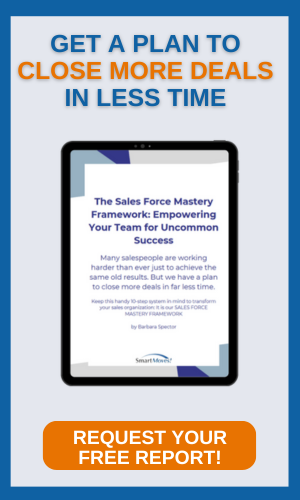Americans who served in the military can fill a range of important roles.
CARLOS PEREZ, GUEST WRITER
Assistant Treasurer at AAFMAA 
Unemployment rates among U.S. military veterans are currently at an all-time low after dropping to 3.8 percent in 2018, continuing a seven-year declining trend. This decline is in part due to a widespread effort by veterans organizations, federal and state governments and corporations to help the newest generation of veterans find meaningful career opportunities.
Lower unemployment rates are certainly great news, and employers should be proud of their efforts to integrate more veterans into the civilian workforce. However, without proper communication, education and compassion from both the job candidate and the employer, veterans can end up filling roles for which they are over-qualified, while business owners miss out on an ideal employee. To remedy this, employers need to understand the varied skills veterans possess, know where to find great candidates and use these skills and qualifications in a way that best contribute to the company’s success, and they can do so by following these three tips.
- Understand veteran skillsets.
Veterans possess incredible organizational and leadership skills, as well as a proclivity for problem-solving in high-pressure situations. When faced with challenges in combat zones or foreign cultures, veterans must be technically and tactically proficient and solutions-oriented to get the job done. While physical harm and danger are much less likely in a civilian workplace, a veteran's tenacity, quick-thinking and collaborative nature are crucial skills that can help your business flourish.
“People mistakenly think of military folks as rigid order-takers and blind followers," says Tom Deierlein, a former U.S. Army Major, Operation Iraqi Freedom Vet, and founder and CEO of Thundercat Technology, an Entrepreneur 360 company. "Nothing could be farther from the truth. Veterans are extremely flexible and creative when it comes to problem-solving and finding a solution, regardless of limited resources or circumstances, something all entrepreneurs need on their team.”
Most job applicants will tell you that they are a “team player.” For veterans, this trait is particularly true. Veterans rarely accomplish military objectives alone. And while they might be self-starters and natural leaders, they do not typically take personal credit in their day-to-day work. As an employer, you want a veteran on your team because he or she will work to complete their individual goals while simultaneously keeping larger group objectives in mind and motivating colleagues toward positive outcomes.
- Know where to look.
Business owners and entrepreneurs should always be on the lookout for the most-qualified candidate for every position. According to David Gowel, a U.S. Army veteran and current CEO of RallyPoint, an online community for military and veterans, “Companies should hire veterans because of the strong mutual fit between the candidate and the role, not simply to fill a quota.” Start by researching veteran-specific job sites where you can post listings, such as Hire Purpose and Recruit Military. You can also go “old school” and keep an eye out for veteran job fairs in your area, which remains a great way to meet potential candidates in a less-formal setting.
Another new tool that is helpful for both veterans and employers is the recently released Google-search algorithm, which tags relevant job openings with Military Occupational Specialty (MOS) codes. Used to indicate a veteran’s service job, these codes generally don’t mean much to a civilian employer. However, when translated properly, they can reveal valuable skills that are directly transferable to many workplaces. The best part about this feature is that it’s automatically integrated into Google’s job search engine, which pulls from many popular listing sites (i.e. Indeed, Monster, LinkedIn), so, if you are already using these platforms, veterans can find your jobs openings even more easily.
To ease the interview and onboarding process within your organization, involve existing veteran team members, if possible. They can help translate military skills seen on resumes and applications for hiring managers. If doable, it can also be helpful for an interviewee or new- to engage with another veteran during the process.
- Set veterans (and your company) up for success.
During their time in the Armed Forces, a veteran becomes adept at translating supervisor goals and large-scale intent into actionable objectives and day-to-day tasks. To help a veteran use this same way of thinking in any workplace, managers, mentors and team leaders should be transparent about how individual tasks fit into the bigger picture.
Remember, it’s also a two-way street. As an entrepreneur, don’t be afraid to ask your new employee how the transition is going and what you can do to help them overcome any challenges. Not only does this ensure everyone is on the same page from the start, but goals-oriented, big-picture outcomes are often the most-effective motivators for veterans, particularly those working to understand a new role in a new industry.
“If veterans and their leaders regularly share information about the strength of fit for the role, the workplace environment will evolve naturally and productively for both the employee and the company,” adds RallyPoint’s Gowel.
Lastly, and perhaps most importantly, offer opportunities for career advancement frequently. Even following the post-9/11 GI Bill, only 39 percent of all U.S. veterans take advantage of their education benefits. Offering affordable and easy ways to further veterans’s education through the workplace can make the process less daunting and is a step in the right direction for your business.
A military career is a commitment, and veterans are likely to bring this same dedication to a civilian career. Business owners and entrepreneurs share this sense of purpose and mission. By offering veterans opportunities and investing in them as team members, you’ll reinforce a positive and supportive culture that also improves your company’s bottom line.





